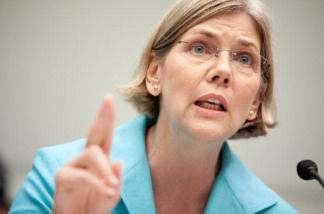Maybe you don’t want to read another gush of outrage over those kids who tried—and failed—to humiliate Omaha tribal elder Nathan Phillips. I’ve seen at least two dozen full-scale editorial pieces, in the mainstream and alternative media, plus many more posted on social media with one of the many shaky iPhone videos and a few choice insults in the comments.
Perhaps you have decided that the news cycle for MAGA Boy and the persistently drumming Native American elder has run its course. Maybe you called or emailed the school in Kentucky to express your displeasure. Make a few comments on social media posts—and considering that the event is now over, it goes into the ‘Old Outrages’ file, along with the Hitler-salute Youth in Baraboo, Wisconsin, and the Stanford swimmer who got away with rape, pretty much. Not to mention Michael Brown, Tamar Rice, et al..
Perhaps there are just too many outrages to keep burning, burning, burning all the time. It’s exhausting. But maybe that’s the problem—we get angry, or sad, or sickened by all signs and signals that there’s something really appalling happening in this country. And we feel powerless to do more than comment.
More than that, we’re not really sure who or what to blame. We don’t know how to fix this.
Is this about a spoiled and entitled generation of kids? Is it about Catholic schools, sending teenaged boys on a mission to publicly protest a woman’s right to have control over her own body? Who thought that was a good idea? Or is it really about the adults—a response I’ve heard from many educators—and their failure to step in and stop the reprehensible behavior of the boys in their charge, to point out their disrespect, to yank them back?
I think the fact that virtually all the boys in the video were wearing MAGA hats answers that last question. Clearly, that was acceptable gear for a visit to the nation’s capital. They got off the bus with those baseball caps, their cell phones to document their manly actions, and their inclination to rumble.
The thing is—and I’m not the first to point this out—we’ve seen boys like this before. Boys like this have been part of our history, from Birmingham to Wounded Knee to Charlottesville. They sit in corner offices, the halls of power and the highest court in the nation. To boys like this, life is a game of winners and losers. They want to be winners, to come out on top. And white boys think they have the advantage there.
The question now is not who’s most to blame— or whether the boys even understood the political and philosophical differences between the Black Hebrew Israelites, who were also protesting, and the cause of the Indigenous Peoples March. Doubtful.
The question we need to be asking is what this incident represents about us, as a nation. What will we do next, how can this be mended, what does it mean to be ‘great?’
Perhaps the most on-point and frightening thing I’ve read came from Nathan Phillips himself:
Phillips said he recalled “the looks in these young men’s faces … I mean, if you go back and look at the lynchings that was done (in America) …and you’d see the faces on the people … The glee and the hatred in their faces, that’s what these faces looked like.”
So–let’s stop talking about this incident as proof that Catholic schools are missing the moral mark, or that teenagers are clueless jerks who don’t know their own history, or that parents need to take a firm hand and stop defending their kids (instead of hiring PR firms to clean up the mess).
This is about a malevolence sweeping across our country. We’re all involved here. This is about racism, in all its filthy and sordid flavors, shapes and forms.
It’s just more evidence that demons we thought had been tamped down, again and again, are on the loose once more. Ethnocentrism, xenophobia, and white nationalism, parading around in red hats. The cracks in our democracy widening. A new sense of who the natural winners and losers are—who ‘deserves’ to come out on top.
In one of the videos, Nathan Phillips says:
“Let’s make America great. Let’s do that.” After an exchange about “stolen land” one young person responds to Phillips’ group by saying, “And y’all stole it from the aboriginals. … Land gets stolen. That’s how it works. It’s the way of the world.”
There you have it. Not sure who told this kid that stealing property was the way of the world, but if this is what young men attending a school that purports to inculcate strong moral character believe, we’re in terrible trouble. White teachers and parents need to take a good look at not only what happens on school trips, but in the curriculum, the athletic fields, at the dinner table and every other place that our kids look for role models and guidance. Because they ARE looking.
That doesn’t mean I’ve let these kids off the hook. I haven’t. Only this: if you were relieved that YOUR children/students/community would never behave like this, look at what’s coming down the pike.
Decide for yourself what is causing this upsurge in hate and ugliness.
Nathan Phillips gets the last word:
Phillips said the students who derided him Friday were motivated by fear of different people.
“The Black Israelites, they were saying some harsh things, but some of it was true, too,” Phillips said. “These young, white American kids who were being taught in their Catholic school, their doctrine, their truth, and when they found out there’s more truth out there than what they’re being taught, they were offended, they were insulted, they were scared, and that’s how they responded. One thing that I was taught in my Marine Corp training is that a scared man will kill you. And that’s what these boys were. They were scared.”




